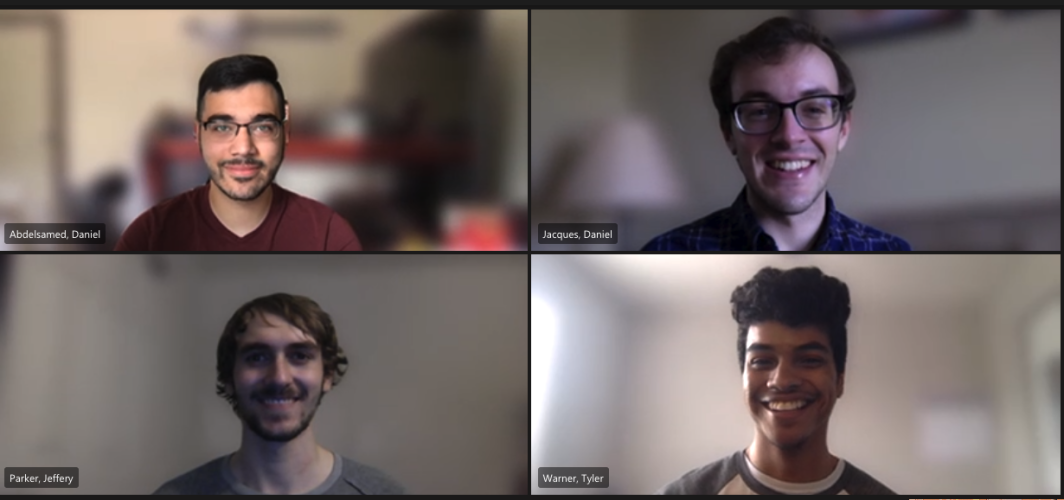
Students gain real-world web development experience through OHIO IT program

As a result of Brad Golski’s involvement with the Student Software Engineering Program, he has gained real-world experience with web application development and scored two summer internships.
Golski, a junior studying computer science, has been working with the Office of Information Technology (OIT) program since September 2019. The Student Software Engineering Program offers computer science students professional experience that benefits both their careers and Ohio University. The hands-on program has served dozens of students at OHIO such as Golski for almost a decade.
Through the program, Golski is currently rewriting a web application for the Ohio Program of Intensive English.
“It’s honestly been invaluable; it’s so helpful,” Golski said about the experience. “There are a lot of things that we learn in OIT that supplement the things we learn in computer science classes. I would say the majority of things that we do at OIT are things that we wouldn’t have experienced in our classes otherwise.”
Last summer, Golski interned with Cleveland Key Bank. He will work at JP Morgan-Chase in Columbus as a software engineering intern this summer.
The work done by students such as Golski in the Student Software Engineering Program makes it into live web applications used by students, faculty and staff at Ohio University. Examples include the web-based Online Class Permission system, Upperclass Scholarship Application and Ohio University Course Offerings.
Student programmers have also worked on updating the student and employer portals for the Program to Aid Career Exploration (PACE). The project has been ongoing for almost two years and has been taken on exclusively by students as a senior capstone project.
“One of the real benefits of it is the opportunity that students get to work on real-world applications while they are students here at the University before they go into the workforce,” said Robert Foreman, the manager of OIT’s software engineering team and who oversees the Student Software Engineering Program.
By employing students, the program is a cost-effective method to improve University web applications used by students, administrators and staff.
Nasseef Abukamail, professor of instruction of computer science, teaches senior design computer science courses and works with Foreman to recruit potential students for the program.
Each fall the program takes on three to four new students who average around 10-15 hours of work per week upgrading technology and security for web applications.
By the time computer science students reach their senior capstone program, where they are divided into cohorts, they are well-versed in the necessary technology.
Participants in the program are expected to follow the same procedures and processes as full-time OIT professionals. Students learn to use:
- Source code version management tools like git
- Project management and time management tools like Jira
- Agile development processes like sprints
- Technologies including Angular, TypeScript, NodeJS, Kubernetes, Java, Python and Relational Databases
“Students work with tools and programming languages that are commonly used in the industry,” Abukamail said. “Not only that but it prepares the students to work in groups. Creating that team dynamic and learning how to deal with others is extremely beneficial to them.”
Karl Francis is a software engineer and mentor for the Student Software Engineering Program. Francis primarily oversees senior students by assigning tasks and giving technical advice.
“Mentoring students keeps me learning. Students always find new and interesting ways to break things we thought were working well. They also ask hard questions which, when answered, allow the student and myself to grow,” Francis said.
Daniel Jacques is a senior majoring in computer science who has been a member of the program since his junior year. He is currently working on a project for the state of Ohio through a partnership with Ohio University.
“A lot of the technology tools that we use at OIT are relevant to the real world,” Jacques said. “The languages and workflow that we go through are not always taught in classes.”
Jacques recently accepted a position with Nationwide in Columbus that he will begin after graduating.
Foreman hopes to eventually formalize the relationship between the Student Software Engineering Program and Russ College of Engineering and Technology and use it as a way to draw in prospective computer science students.
“I am working to try and expand opportunities like this within OIT. I have encouraged other managers to find similar opportunities and to structure student opportunities for both employment and internships,” said Foreman.
Students working to maintain the University’s web applications are increasingly necessary to help the OHIO community teach, learn, and work in a digital age, allowing Ohio University to continue to succeed while preparing students for information technology careers.
